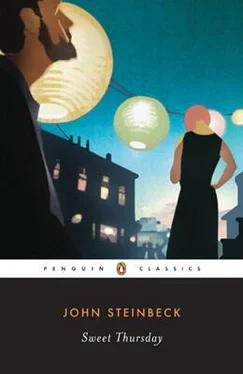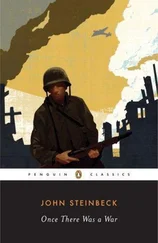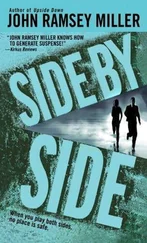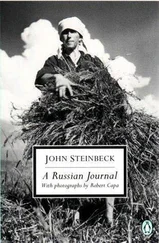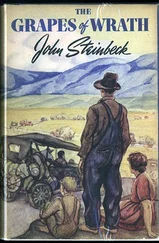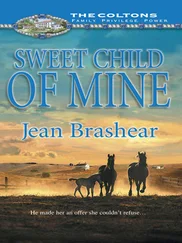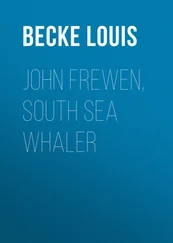John Steinbeck - Sweet Thursday
Здесь есть возможность читать онлайн «John Steinbeck - Sweet Thursday» весь текст электронной книги совершенно бесплатно (целиком полную версию без сокращений). В некоторых случаях можно слушать аудио, скачать через торрент в формате fb2 и присутствует краткое содержание. Год выпуска: 2008, ISBN: 2008, Издательство: Penguin Classics, Жанр: Классическая проза, на английском языке. Описание произведения, (предисловие) а так же отзывы посетителей доступны на портале библиотеки ЛибКат.
- Название:Sweet Thursday
- Автор:
- Издательство:Penguin Classics
- Жанр:
- Год:2008
- ISBN:1-4362-4126-X
- Рейтинг книги:5 / 5. Голосов: 1
-
Избранное:Добавить в избранное
- Отзывы:
-
Ваша оценка:
- 100
- 1
- 2
- 3
- 4
- 5
Sweet Thursday: краткое содержание, описание и аннотация
Предлагаем к чтению аннотацию, описание, краткое содержание или предисловие (зависит от того, что написал сам автор книги «Sweet Thursday»). Если вы не нашли необходимую информацию о книге — напишите в комментариях, мы постараемся отыскать её.
Cannery Row
Sweet Thursday — читать онлайн бесплатно полную книгу (весь текст) целиком
Ниже представлен текст книги, разбитый по страницам. Система сохранения места последней прочитанной страницы, позволяет с удобством читать онлайн бесплатно книгу «Sweet Thursday», без необходимости каждый раз заново искать на чём Вы остановились. Поставьте закладку, и сможете в любой момент перейти на страницу, на которой закончили чтение.
Интервал:
Закладка:
John Steinbeck
Sweet Thursday
For
ELIZABETH
with love [1] DEDICATION: Elizabeth R. Otis (1901–81), Steinbeck’s literary agent and confidante, and cofounder in 1928 of New York literary agency McIntosh and Otis. Steinbeck’s voluminous correspondence with Otis covered thirty-seven years, from 1931 to his death in 1968; a sampling is available in Steinbeck: A Life in Letters (1975), Letters to Elizabeth (1978), and in the Appendix to The Acts of King Arthur. The main collection is housed at Stanford University Library’s Department of Special Collections and University Archives. Access the individual Container List of the Steinbeck–Otis correspondence in the John Steinbeck Collection, 1902–1979, at content.cdlib.org/view?docId=tf3c6002vx&chunk.id=dsc-1.8.6 .
Prologue [2] PROLOGUE: Originally titled “Introduction Mack’s Contribution,” a much longer version of the prologue (156 lines long as opposed to 47) appears in the original autograph manuscript, the typed manuscript, and the unrevised galley proofs of Sweet Thursday (all housed at the Harry Ransom Humanities Research Center, University of Texas, Austin). It is not known why Steinbeck excised such a large portion of the text.
One night Mack lay back on his bed in the Palace Flop house and he said, “I ain’t never been satisfied with that book Cannery Row. [3] that book Cannery Row: Steinbeck’s earlier roman à clef novel (1945), set in pre–World War II Monterey, featuring the protagonist Doc (based on Edward F. Ricketts) and including in its cast of characters numerous other lightly fictionalized, loosely disguised real-life persons. The novel is dedicated “For Ed Ricketts / who knows why or should.” On the dedication page of the copy Steinbeck presented to Ricketts, he wrote, “with all the respect and affection this book implies.” In his memoir “About Ed Ricketts” (1951), Steinbeck wrote: I used the laboratory and Ed himself in a book called Cannery Row. I took it to him in typescript to see whether he would resent it and to offer to make any changes he would suggest. He read it through carefully, smiling, and when he had finished he said, “Let it go that way. It is written in kindness. Such a thing can’t be bad.” But it was bad in several ways neither of us foresaw. As the book began to be read, tourists began coming to the laboratory, first a few and then in droves. People stopped their cars and stared at Ed with that glassy look that is used on movie stars. Hundreds of people came into the lab to ask questions and peer around. (pp. lvi–lvii)
I would of went about it different.”
And after a while he rolled over and raised his head on his hand and he said, “I guess I’m just a critic. But if I ever come across the guy that wrote that book I could tell him a few things.”
“Like what?” said Whitey No. 1.
“Well,” said Mack, “like this here. Suppose there’s chapter one, chapter two, chapter three. That’s all right, as far as it goes, but I’d like to have a couple of words at the top so it tells me what the chapter’s going to be about. Sometimes maybe I want to go back, and chapter five don’t mean nothing to me. If there was just a couple of words I’d know that was the chapter I wanted to go back to.”
“Go on,” said Whitey No. 1.
“Well, I like a lot of talk in a book, and I don’t like to have nobody tell me what the guy that’s talking looks like. I want to figure out what he looks like from the way he talks. And another thing—I kind of like to figure out what the guy’s thinking by what he says. I like some description too,” he went on. “I like to know what color a thing is, how it smells and maybe how it looks, and maybe how a guy feels about it—but not too much of that.”
“You sure are a critic,” said Whitey No. 2. “Mack, I never give you credit before. Is that all?”
“No,” said Mack. “Sometimes I want a book to break loose with a bunch of hooptedoodle. The guy’s writing it, give him a chance to do a little hooptedoodle. Spin up some pretty words maybe, or sing a little song with language. That’s nice. But I wish it was set aside so I don’t have to read it. I don’t want hooptedoodle to get mixed up in the story. So if the guy that’s writing it wants hooptedoodle, he ought to put it right at first. Then I can skip it if I want to, or maybe go back to it after I know how the story come out.”
Eddie said, “Mack, if the guy that wrote Cannery Row comes in, you going to tell him all that?”
Whitey No. 2 said, “Hell, Mack can tell anybody anything. Why, Mack could tell a ghost how to haunt a house.”
“You’re damn right I could,” said Mack, “and there wouldn’t be no table-rapping or chains. There hasn’t been no improvement in house-haunting in years. You’re damn right I could, Whitey!” And he lay back and stared up at the canopy over his bed.
“I can see it now,” said Mack.
“Ghosts?” Eddie asked.
“Hell, no,” said Mack, “chapters….”
1
What Happened In Between
When the war came to Monterey and to Cannery Row [4] Cannery Row: Site of numerous fish canneries, fish reduction plants, and processing and packing houses along Ocean View Avenue, Monterey. The street was renamed Cannery Row in 1958. That section of town was called New Monterey, which, Susan Shillinglaw explains in A Journey into Steinbeck’s California (2006), was “not Spanish Monterey, not Methodist Pacific Grove, but the shoreline and sloping wooded hills between these places…” (p. 107)
everybody fought it more or less, in one way or another. When hostilities ceased everyone had his wounds.
The canneries themselves fought the war by getting the limit taken off fish and catching them all. It was done for patriotic reasons, but that didn’t bring the fish back. As with the oysters in Alice, [5] “As with the oysters in Alice …”: From “The Walrus and the Carpenter,” a poem in chapter four of Through the Looking-Glass and What Alice Found There (1871), by British writer and mathematician Charles L. Dodgson (1832–98), whose pseudonym was Lewis Carroll: “ ‘O Oysters,’ said the Carpenter, / ‘You’ve had a pleasant run! / Shall we be trotting home again?’ / But answer came there none—/ And this was scarcely odd, because / They’d eaten every one.”
“They’d eaten every one.” It was the same noble impulse that stripped the forests of the West and right now is pumping water out of California’s earth faster than it can rain back in. When the desert comes, people will be sad; just as Cannery Row was sad when all the pilchards [6] pilchards: California sardine (Sardinia caerulea). At eleven to fourteen inches in length, it was the state’s most important commercial fish until midcentury. According to a graph in Richard F. G. Heimann and John G. Carlisle’s The California Marine Fish Catch for 1968 and Historical Review, 1916–1968, reprinted in Michael Hemp, Cannery Row (1986), in 1941–42, the Monterey area sardine catch was a record 250,287 tons. The canning boom driven by World War II saw Monterey become “the Sardine Capital of the World,” though in 1947–48, around the time of Doc’s discharge from the army, the catch was 17,630 tons (p. 110). Marine scientist Ed Ricketts studied the sardine extensively during his later career, and in his final article on the subject, published in the Monterey Peninsula Herald in 1948 (shortly before his death) and reprinted in Ricketts, Breaking Through (2006), concluded that if “conservation had been adopted early enough, a smaller but streamlined cannery row…would be winding up a fairly successful season, in stead [ sic ] of dipping, as they must be now, deeply into the red ink of failure” (p. 330). As Katherine Rodger asserts in her Introduction to Breaking Through, his “pleas for moderation fell on deaf ears…” (p. 73). In 1953 to 1954, the year Sweet Thursday was published, a greatly reduced Monterey fleet brought in fifty-eight tons.
were caught and canned and eaten. The pearl-gray canneries of corrugated iron were silent and a pacing watchman was their only life. The street that once roared with trucks was quiet and empty.
Интервал:
Закладка:
Похожие книги на «Sweet Thursday»
Представляем Вашему вниманию похожие книги на «Sweet Thursday» списком для выбора. Мы отобрали схожую по названию и смыслу литературу в надежде предоставить читателям больше вариантов отыскать новые, интересные, ещё непрочитанные произведения.
Обсуждение, отзывы о книге «Sweet Thursday» и просто собственные мнения читателей. Оставьте ваши комментарии, напишите, что Вы думаете о произведении, его смысле или главных героях. Укажите что конкретно понравилось, а что нет, и почему Вы так считаете.
